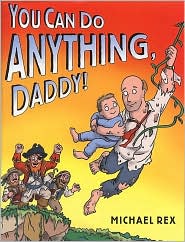
The Art Box by Gail Gibbons
 Before reading the book: Ask the children to describe things they would put in a box. And in this box it will contain art supplies. What can you think of? They reply with crayons, paint, etc. This is a great way for children to use the vocabulary that they do know and also good for developing Narrative Skills, which is the ability to describe events and tell stories. Now let's see how a book can help introduce children to new vocabulary.Read the book Art Box by Gail Gibbons.
Have items like compass, protractor, etc. available for the children to see and use. Talk about what they do.
Early Literacy Aside--Empower: Parents, having real objects to help children understand words in the book is one way to help build their vocabulary, to learn the meanings of words. Even when you are not reading books, just talking about objects around the house and what they do is one way to expand children's understanding.
Before reading the book: Ask the children to describe things they would put in a box. And in this box it will contain art supplies. What can you think of? They reply with crayons, paint, etc. This is a great way for children to use the vocabulary that they do know and also good for developing Narrative Skills, which is the ability to describe events and tell stories. Now let's see how a book can help introduce children to new vocabulary.Read the book Art Box by Gail Gibbons.
Have items like compass, protractor, etc. available for the children to see and use. Talk about what they do.
Early Literacy Aside--Empower: Parents, having real objects to help children understand words in the book is one way to help build their vocabulary, to learn the meanings of words. Even when you are not reading books, just talking about objects around the house and what they do is one way to expand children's understanding.
Submitted by Katie Ross, Kanawha County (WV) Public Library System
You Can Do Anything, Daddy by Michael Rex
[Notice how the fonts for what the boy says and what the father says are different.]Read the book You Can Do Anything Daddy by Michael Rex. Point to some of the words that are in large type (gorilla, robot, Mars) Early Literacy Aside--Example: I pointed to some of the words in the book, the ones with larger type, as I read them. This helps children understand that it is the words we are reading, which develops print awareness, one of the skills children need for later reading.
Tippy-Toe Chick, Go! by George Shannon
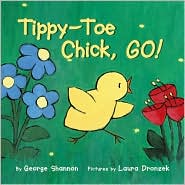
Tippy-Toe Chick, Go! by George Shannon
Early Literacy Aside--Explain: Letting your children know when you really enjoy a book helps them see your own enjoyment. Even doing this small thing helps develop print motivation, a child's interest and enjoyment of books and reading.Early Literacy Aside--Example: Our next book is funny and clever. I enjoy this book because the little chick is the one who is so smart! Listen to what happens. Read the book Tippy-Toe Chick, Go! by George Shannon. [For more participation, which also supports print motivation, have the participants chime in for RUFF-RUFF and tippy-toe, tippy-toe.]
Don't Worry Bear by Greg Foley
 Book Introduction: Our next book is Don't Worry Bear by Greg Foley. [Run your finger under the title.] In this book the caterpillar says the words "Don't worry, bear" over and over again. Let's practice saying that--"Don't worry. bear." Good! . . .As I read the book, I'll point to you all and you'll know to say, "Don't worry, bear." [As you read the book run your finger under the words don't worry bear, as they say these words.]
Early Literacy Aside--Example: You noticed that I ran my finger under the words don't worry bear each time you all said those words. This helps develop your children's print awareness, knowing that print has meaning and that it is the words we read. You can do this with any book you read!
Book Introduction: Our next book is Don't Worry Bear by Greg Foley. [Run your finger under the title.] In this book the caterpillar says the words "Don't worry, bear" over and over again. Let's practice saying that--"Don't worry. bear." Good! . . .As I read the book, I'll point to you all and you'll know to say, "Don't worry, bear." [As you read the book run your finger under the words don't worry bear, as they say these words.]
Early Literacy Aside--Example: You noticed that I ran my finger under the words don't worry bear each time you all said those words. This helps develop your children's print awareness, knowing that print has meaning and that it is the words we read. You can do this with any book you read!
Don't Worry Bear by Greg Foley

Don't Worry Bear by Greg Foley
Before reading the book talk about caterpillars and how they grow. Ask questions to see what the children already know.Read the title, Don't Worry Bear, and tell the group that these words are repeated throughout the book. Let's say them all together, "Don't worry, bear." The caterpillar keeps saying "Don't worry, bear," and you will say it each time. Let's try it. Read the book Don't Worry Bear by Greg Foley. Early Literacy Aside--Example: Having the children repeat a phrase in the book is the beginning of developing your children's narrative skills. The next step is to have your child retell the story to you. This later helps with your child understanding what he will read when he gets to school.
Buzz, Buzz, Buzz! Went Bumblebee by Colin West
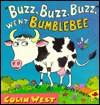 Early Literacy Aside--Explain: Narrative skills can be developed by having your children tell stories. This is easier for some children when they recognize patterns so that they can predict what will happen next.Early Literacy Aside--Example: As we read the book we want to encourage our children to recognize the pattern and to repeat "buzz, buzz, buzz" and "buzz off."
Read Buzz, Buzz, Buzz! Went Bumble-bee by Colin West
Fingerplay: Here is the Beehive
Here is the beehive. Where are the bees? (Hold up fist.)
Hidden away where nobody sees. (Move other hand around fist.)
Watch and you see them come out of the hive. (Bend head close to fist.)
One, two, three, four, five. (Hold fingers up one at a time.)
Bzzzzzzzz all fly away! (Wave fingers.)
Early Literacy Aside--Empower: Children enjoy repeating phrases as they did in our book and song. Please help your children look for patterns in the books and songs you do at home. This helps foster your children's narrative skills which will later help them understand how stories work and will help them understand what they read.
Early Literacy Aside--Explain: Narrative skills can be developed by having your children tell stories. This is easier for some children when they recognize patterns so that they can predict what will happen next.Early Literacy Aside--Example: As we read the book we want to encourage our children to recognize the pattern and to repeat "buzz, buzz, buzz" and "buzz off."
Read Buzz, Buzz, Buzz! Went Bumble-bee by Colin West
Fingerplay: Here is the Beehive
Here is the beehive. Where are the bees? (Hold up fist.)
Hidden away where nobody sees. (Move other hand around fist.)
Watch and you see them come out of the hive. (Bend head close to fist.)
One, two, three, four, five. (Hold fingers up one at a time.)
Bzzzzzzzz all fly away! (Wave fingers.)
Early Literacy Aside--Empower: Children enjoy repeating phrases as they did in our book and song. Please help your children look for patterns in the books and songs you do at home. This helps foster your children's narrative skills which will later help them understand how stories work and will help them understand what they read.
Who's There on Halloween? by Pamela Beall

Song: Do a rhyming song to the tune of Are You Sleeping? We are rhyming; we are rhyming. Rhyme with me; rhyme with me. Nose rhymes with toes; nose rhymes with toes. (substitute other words from story) Rhyme with me; rhyme with me. Early Literacy Aside--Empower: Take advantage of lots of opportunities to play rhyming games with your children. Simple activities like this will help your child be able to sound out words when they learn to read.
Submitted by participants in Saskatchewan Library Association Conference
Move Over Rover! by Karen Beaumont

Fidgety Fish by Ruth Galloway
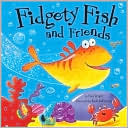
Submitted by participants of Saskatchewan Library Association Conference
Dog Blue by Polly Dunbar
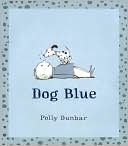
Submitted by participants of Saskatchewan Library Association Conference
Animal Boogie by Debbie Harter

Eat Your Peas by Kes Gray
Click below for a storytime plan including the book Eat Your Peas by Kes Gray and highlighting print motivation.
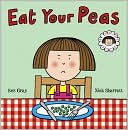
peaspeaspeas1.doc Submitted by participants of Saskatchewan Library Association Conference 2008
How To Be a Good Dog by Gail Page
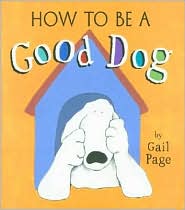
Submitted by Saskatchewan Library Association conference participants
Print Awareness

Talking while reading
 Early Literacy Aside--Explain: Talking with your children while reading, encouraging them to make comments and ask questions is one way to share a book that develops your child's understanding of the book. Make reading with your child a postive experience by allowing your child to make comments and ask questions. Try to focus all your attention on your child for that time.During the storytime, demonstrate these techniques with one or more of your books. Point out what you are doing.
Early Literacy Aside--Empower: Talking with your children and giving them time to respond is supervaluable, even in a conversation consisting entirely of baby babble. This helps your children develop conversation skills. Remember that it can take young children from 5 to 12 seconds to process a question and formulate a response, so it's really important to gie them that extra time to express themselves.
Early Literacy Aside--Explain: Talking with your children while reading, encouraging them to make comments and ask questions is one way to share a book that develops your child's understanding of the book. Make reading with your child a postive experience by allowing your child to make comments and ask questions. Try to focus all your attention on your child for that time.During the storytime, demonstrate these techniques with one or more of your books. Point out what you are doing.
Early Literacy Aside--Empower: Talking with your children and giving them time to respond is supervaluable, even in a conversation consisting entirely of baby babble. This helps your children develop conversation skills. Remember that it can take young children from 5 to 12 seconds to process a question and formulate a response, so it's really important to gie them that extra time to express themselves.
Submitted by Cindy Christin, Bozeman (MT) Public Library and Tracey J., Sacramento (CA) Public Library
Dialogic Reading
 Demonstrate aspects of dialogic reading* by asking open-ended questions during your sharing of a book.Book Introduction: With this next book we are going to focus on what we call "dialogic" or "interactive reading."
Read a book. Come back to a picture and ask a question that cannot be answered with yes or now.
Early Literacy Aside--Example: This technique of sharing a book helps develop their narrative skills, their ability to describe things and experiences.
Early Litearcy Aside--Empower: Try dialogic or interactive reading at home with your child. Simply ask questions about what you've read. You can say, Guess what will happen next or relate the story to your child's real experience. Try to ask questions that cannot be answered with yes or no, or just by pointing to the pictures. Having the children talk about the book helps the develop narrative skills. Also, when the child gives a one-word response, you might expand on what she said, adding description or more information.
Demonstrate aspects of dialogic reading* by asking open-ended questions during your sharing of a book.Book Introduction: With this next book we are going to focus on what we call "dialogic" or "interactive reading."
Read a book. Come back to a picture and ask a question that cannot be answered with yes or now.
Early Literacy Aside--Example: This technique of sharing a book helps develop their narrative skills, their ability to describe things and experiences.
Early Litearcy Aside--Empower: Try dialogic or interactive reading at home with your child. Simply ask questions about what you've read. You can say, Guess what will happen next or relate the story to your child's real experience. Try to ask questions that cannot be answered with yes or no, or just by pointing to the pictures. Having the children talk about the book helps the develop narrative skills. Also, when the child gives a one-word response, you might expand on what she said, adding description or more information.
Submitted by Cindy Christin, Bozeman (MT) Public Library * This webpage of the Talker Script from the first edition of Every Child Ready to Read @ your library initiative of the American Library Association gives more background on dialogic reading: http://www.earlylit.net/readytoread/indexE.shtml#scripts Scroll down under Scripts and click on Talkers. You can also use the Dialogic Reading Handout shown on this webpage.
Songs
 Early Literacy Aside--Explain: Singing songs is one good way for children to become aware of the different sounds that make up words. We call this phonological awareness. Singng helps them get a feel for the rhythm of language and how words are divided into syllables because there is a different note for each syllable. This will help them sound out words when they learn to read.
Submitted by Cindy Christin, Bozeman (MT) Public Library
Early Literacy Aside--Explain: Singing songs is one good way for children to become aware of the different sounds that make up words. We call this phonological awareness. Singng helps them get a feel for the rhythm of language and how words are divided into syllables because there is a different note for each syllable. This will help them sound out words when they learn to read.
Submitted by Cindy Christin, Bozeman (MT) Public Library
